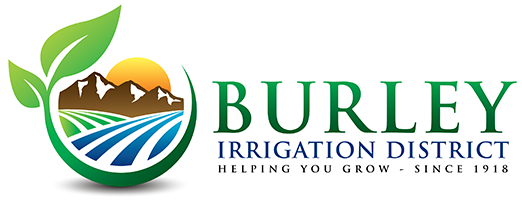FAQs
Ownerships & Easements
In most cases, the property occupied by the canals and laterals is owned by individual landowners. However, the BID was granted by Idaho Statute an easement to use the land occupied by the main canals and laterals as well as sufficient land required to perform operations and maintenance activities on both sides of the canal. This easement includes all access roads. The Smaller ditches that branch off of the main canals and laterals are owned, operated, and maintained by the landowner/water user beginning at the headgate.
The water conveyed in the canal has been appropriated from the State of Idaho for the BID members' use just like drinking water is supplied by a municipal entity for individual residents. BID water can only be used within the lands designated by our water rights, and the BID Watermaster and ditchriders are responsible to ensure that BID water is appropriately measured and diverted.
Each acre of land within the BID boundaries is allotted four acre feet (4 AF) of water per irrigation season. However, water users must place water orders with their ditchrider by 1:00 pm the day prior to diverting the water. In some areas of the system, water users may also be placed on a watering schedule to ensure equitable and efficient water distribution.
No. Canals and ditches are not safe for swimming or other activities and are located on privately-owned property. Canal access roads are also constructed on privately-owned land and the District is the only authorized user of the roadways. The roads may not be used as access routes.
Assessments
District assessments fund the costs associated with operating and maintaining the canal system, infrastructure, equipment, and staff. The Board of Directors establish the yearly assessment and approve/oversee the operating budget and expenditures.
The District's fiscal year begins on November 1st each year and assessment notices are sent out in December. Assessments become delinquent on June 1st, and the accounts begin accruing late fees and penalties on that date. Additionally, water is not delivered to landowners who have unpaid assessments.
Yes, that is true. There is a process in place that allows landowners in this situation to leave the BID through "exclusion." Other landowners with land outside the current district boundaries, but whose land is irrigable from the canal system are waiting to enter the district through "inclusion." Since BID must maintain approximately 48,000 assessed acres, exclusions and inclusions are matched and processed on a one-for-one basis. Landowners who choose not to go through the process must continue to pay the annual assessment.
Irrigation District assessments are like property taxes in that a primary tax lien can put against the property for nonpayment. Assessments become a lien upon the property which may be enforced by the issuance of a tax deed for nonpayment in the same manner that real property taxes are assessed and collected, or by foreclosure of the lien by the District in the same manner that mortgage defaults are enforced. If left unpaid, the lien may be enforced by foreclosure and loss of property.
An irrigation district is a political subdivision of the State of Idaho and is often referred to a "quasi-municipality". An irrigation district generally has established boundaries and assessments are based on the amount of land a person owns within the district's boundaries. Canal companies are private companies that generally issue stock certificates for shares in the company.
